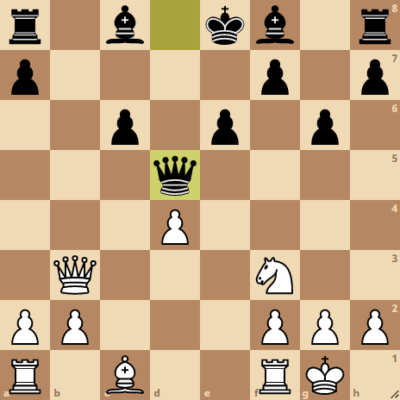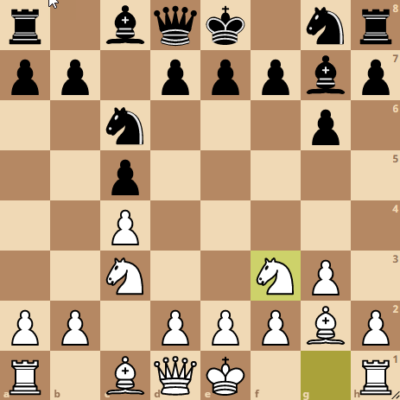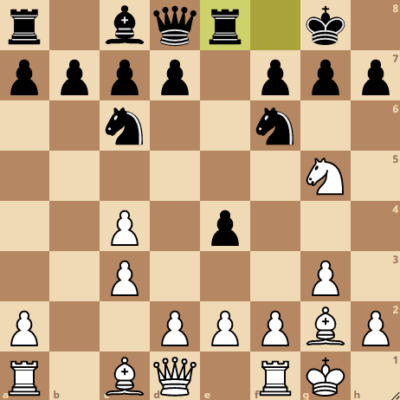Learn Chess. Learn Life Lessons.
Come, join us and transform your kid’s life through chess.
Join Online Coaching Join In-Person Coaching
The English Opening is a flank opening and is considered the 4th most popular opening in the world. Grandmasters who wish to avoid the conventional center pawn openings enjoy playing the English Opening
The English Opening is the fourth most popular opening in the world and, according to databases, is considered between the first two more successful to the fourth most successful opening move for White among the 20 possible moves White has.
White begins the fight for control over the centre by playing c4 as the first move to control the d5 square.
This opening is extremely flexible and allows you to transpose into the King pawn and Queen pawn variations. The English Opening is referred to as a flank opening, which means White does not begin the game with the ‘e’ or ‘d’ pawn. Players who want to avoid complex lines like Slav Defense, the Nimzo-Indian, or the Grunfeld Defense can opt to play the English Opening.
The Opening derives its name from the unofficial English World Champion Howard Staunton. Staunton played this opening in 1843 during his match against Saint-Amant. The line did not gain much popularity back then but gained fame in the twentieth century.
The crux of this opening is that White uses minor pieces to control the centre instead of promoting pawns in the beginning to do the same. White tries to fianchetto the light square Bishop to gain control over the centre. The opening accommodates slow development and fine strategic gameplay. This opening centres its play upon positional tactics and advantages, allowing players to explore their skills and learnings widely.
This line is called the symmetrical defence as Black responds to the c4 pawn by playing c5. It is commonly seen that this symmetry is maintained in this line for a couple of moves as White and Black have similar motives in this opening. The three main moves that can play on the third move are – Nf3, Nc3 and g3.
If White plays Nf3, Black’s main response is Nc6 to gain control over the d4 square, and this line continues as following:

e3 on the fourth move is a common line in the English Defense.
If Black plays g6 as a response to White’s Nf3, Black has to play the Maroczy Blind Position, which will arise from the Accelerated Dragon,, and it follows the path below:

If White plays g3 on the second move instead of Nf3, the following notations take place:

The lines where Black plays Nf6 on the 2nd move are called the Anti-Benoni lines as they arise after White avoids the Benoni Defense. If White plays e3 on the second move, the position transposes into the Panov–Botvinnik Attack or the Queen’s Gambit Declined. Another interesting line under the mainline is the Double Fianchetto Defense where Black brings the Bishops to the g7 and b7 squares and this defence is very solid and difficult to tackle at the Grandmaster level.
The names come from the fact that if Black responds to White’s c4 with e5, the position looks like the Sicilian Defense with opposite colors.

In this opening, it may seem like Black is trying to push the ‘e’ pawn beyond a necessary territory. By playing Ng5, White is attacking the ‘e’ pawn in three different ways, and the position becomes imbalanced. Now, White has an excess of pawns in the centre but also has double pawns. Simultaneously, Black’s ‘e’ pawn can be a cause for danger as the game progresses. Further, White has a pair of Bishops that Black lacks, which is an advantage for White.
White will respond on the second move with Nf3, followed by Black playing d5. White can now play d4 and transpose this into the Queen’s Gambit, or White can maintain the English Opening by playing g3. If Black plays dxc4, Whit can immediately play Qa4+ to regain the pawn, followed by Bg2.
This response is not considered a great one as after d5, White can capture the pawn by playing cxd5, and Black will have to get the Queen out early into the game to recapture this pawn which will be met by Nc3. This is called the Anglo Scandinavian Defense.
This is the most common response to White’s c4, which leads to the Indian Defense. It can also transpose into the Symmetrical Defense or the Reversed Sicilian Defense.
This is a sharp response known as Myer’s Defense. White will respond with d4, and Black will put pressure on the d4 square with moves like Bg7, c5 and Qb6. This is an improved version of Grob’s Attack.
The following is a trap in the symmetrical defence:

Mikhail Botvinnik, Tigran Petrosian, Anatoly Karpov, Garry Kasparov, and Magnus Carlsen have played this opening in a few World Championship games. Audiences went into a stir when Bobby Fischer switched to the English Opening from the ‘e4’ opening. Bobby even played this opening in his famous match against Boris Spassky.
| RESULT | RATE |
|---|---|
| White Wins | 54.9% |
| Draws | 27.3% |
It is preferred for Beginners to stick to Classical openings as this opening requires some detailed knowledge and a certain amount of skill to accurately play this opening.
It is the fourth most common opening to play as White.
This opening is a great fit for players who play attacking games and want to avoid playing common moves like e4 and d4 and allow such players to branch into more positional based games.
Learn Chess. Learn Life Lessons.
Help your child improve their Strategic Thinking, Critical Thinking, Time Management, etc. through the game of Chess.

This article is technically edited and reviewed by Grand Master Marian Petrov.

CHESS KLUB offers chess classes for kids and adults of all levels. Our coaches include FIDE, National, International and Grand Masters among many.
We offer Online and Classroom coaching.
CHESS KLUB has coaching centers in the US and India now!
Do you want to see your kid excel in Chess?
Learn Chess. Learn Life Lessons.
